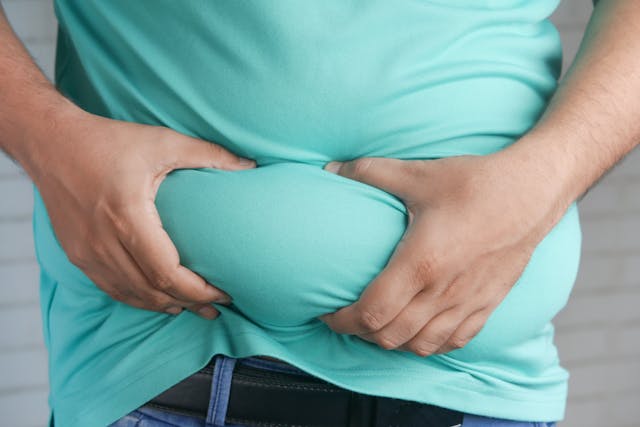Clean Eating for Beginners: What to Eat & What to Avoid
What is Clean Eating?
Clean Eating for Beginners: What to Eat & What to Avoid. Clean eating isn’t a diet—it’s a lifestyle shift. At its core, clean eating means consuming whole, minimally processed foods that nourish your body, boost energy, and support long-term health. It’s about choosing real food in its most natural state and avoiding ingredients that slow you down or sabotage your health goals.
Whether you’re looking to lose weight, boost your energy, or simply feel better overall, this clean eating guide will help you make smarter, more intentional choices every day.
Why Clean Eating Works
Your body thrives when it’s fueled by nutrients—not chemicals, preservatives, or empty calories. Clean eating works because it:
- Supports digestion and gut health
- Reduces inflammation
- Balances blood sugar and hormones
- Helps with weight loss and muscle maintenance
- Provides sustainable energy throughout the day
By focusing on nutrient-dense foods, you’re giving your body what it needs to function at its best—without extreme dieting or calorie counting.
What to Eat: The Clean Eating Essentials
✅ 1. Vegetables & Fruits (Fresh, Organic When Possible)
Packed with vitamins, minerals, fiber, and antioxidants. Focus on a variety of colors to cover all your nutritional bases.
Examples: Leafy greens, broccoli, carrots, bell peppers, berries, apples, bananas, avocados.
✅ 2. Lean Proteins
Proteins are essential for muscle repair, metabolism, and satiety.
Examples: Chicken breast, turkey, grass-fed beef, wild-caught fish, eggs, tofu, tempeh, lentils.
✅ 3. Whole Grains
Whole grains provide fiber, B vitamins, and slow-releasing carbs for sustained energy.
Examples: Brown rice, quinoa, oats, barley, bulgur.
✅ 4. Healthy Fats
Essential for hormone balance, brain function, and absorption of fat-soluble vitamins.
Examples: Olive oil, avocado, nuts, seeds, coconut oil, fatty fish (like salmon).
✅ 5. Clean Beverages
Hydration is crucial. Avoid sugary drinks and focus on clean fluids.
Examples: Filtered water, herbal teas, black coffee, lemon water, green tea.
✅ 6. Natural Sweeteners (In Moderation)
Limit refined sugar and opt for cleaner alternatives.
Examples: Raw honey, pure maple syrup, monk fruit, stevia.
What to Avoid: The Usual Suspects
🚫 1. Added Sugar & Artificial Sweeteners
Sugar hides in everything—from sauces to protein bars. Too much sugar can spike blood sugar, increase fat storage, and harm gut health.
Avoid: Soda, candy, sweetened yogurt, flavored coffee drinks, high-fructose corn syrup, aspartame.
🚫 2. Refined Carbs
These cause energy crashes and are stripped of fiber and nutrients.
Avoid: White bread, pastries, cookies, crackers, white pasta.
🚫 3. Processed & Packaged Foods
Often high in sodium, additives, and preservatives.
Avoid: Frozen dinners, snack bars, processed meats, microwave meals, chips.
🚫 4. Trans Fats & Unhealthy Oils
Linked to heart disease and inflammation.
Avoid: Margarine, shortening, vegetable oil blends, anything labeled “hydrogenated.”
🚫 5. Artificial Ingredients
Colorings, flavorings, and preservatives offer no nutritional value and can be harmful long-term.
Avoid: Red 40, MSG, BHA/BHT, artificial flavors.
How to Get Started: Clean Eating Tips for Beginners
✅ 1. Start Slow
You don’t have to change everything overnight. Begin by swapping one processed item with a whole food alternative.
✅ 2. Read Labels
If you can’t pronounce it, it’s probably not clean. Stick to short, recognizable ingredient lists.
✅ 3. Cook More at Home
Homemade meals mean you control the ingredients—and avoid hidden sugar, salt, and oils.
✅ 4. Meal Prep
Plan your meals ahead to avoid impulse takeout or fast food runs. Prep veggies, grains, and proteins on weekends.
✅ 5. Follow the 80/20 Rule
Clean eating isn’t about perfection. Eat clean 80% of the time and allow 20% for flexibility. This keeps it sustainable.
Sample One-Day Clean Eating Meal Plan
Breakfast:
Greek yogurt with berries, chia seeds, and raw honey.
- Green tea or lemon water
Snack:
Sliced apple with almond butter
Lunch:
Grilled chicken breast, quinoa, and mixed greens with olive oil & lemon
Snack:
Raw nuts and a few carrot sticks
Dinner:
Baked salmon with roasted sweet potatoes and steamed broccoli
Dessert (Optional):
Dark chocolate square or homemade banana “ice cream”
Common Clean Eating Myths Debunked
❌ You have to be vegan or paleo.
Clean eating is flexible and can fit any dietary style.
❌ It’s too expensive.
Whole foods can be affordable when bought in bulk or seasonal. You save money by avoiding processed snacks and takeout.
❌ You’ll never eat dessert again.
You can enjoy treats—just make them from whole ingredients.
Final Thoughts: Clean Eating Is a Lifestyle, Not a Trend
Clean eating is about making conscious choices to fuel your body with what it needs to feel and function at its best. It’s not about restriction—it’s about intention. Focus on progress, not perfection. And remember: the more whole, colorful, and close to nature your food is, the better you’ll feel.
Whether you’re starting from scratch or refining your habits, this guide is your foundation for a healthier, more energized lifestyle.
Ready to start your clean eating journey?
Subscribe to my newsletter or download my 3-day clean eating meal plan to get started today!


